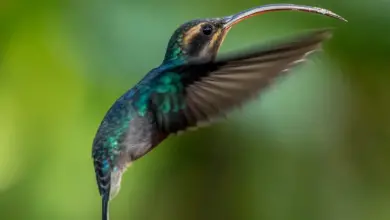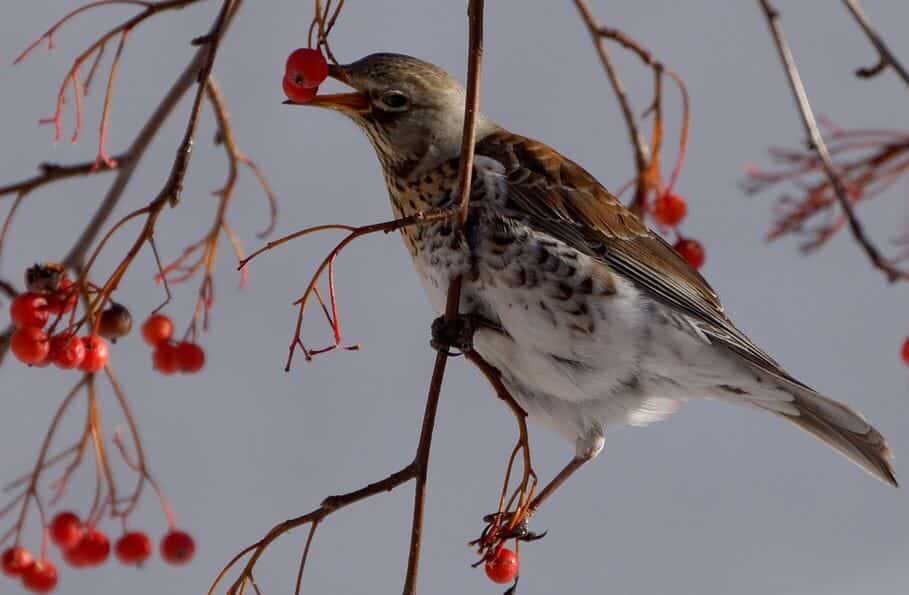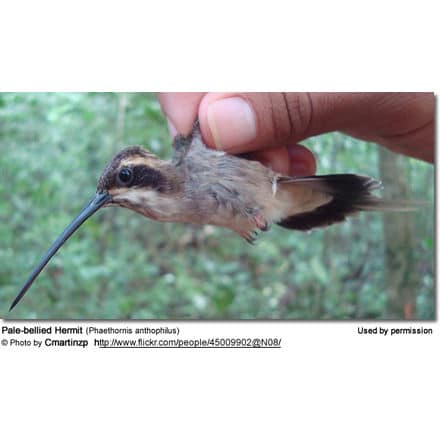Santa Marta Sabrewings
The Santa Marta Sabrewings (Campylopterus phainopeplus, Salvin and Godman, 1879) is a fairly large South American hummingbird that only occurs naturally in Colombia, where it has a very limited range.
Alternate (Global) Names
Chinese: ?????? … Czech: kolib?ík tyrkysový … Dutch: Santa Maria-sabelvleugel … German: Santa-Marta-Degenflügel … Danish: Santa Marta-sabelvinge … Finnish: kolumbiansapelikolibri … French: Campyloptère des Santa Marta … Italian: Campilottero di Santa Marta … Japanese: aigashirahachidori … Norwegian: Santamartasabelvinge … Polish: zapylak kolumbijski … Slovak: kolibrík tyrkysový … Spanish: Colibrí de Santa Marta … Swedish: Santa Martasabelvinge
Hummingbird Resources
- Hummingbird Information
- Hummingbird Amazing Facts
- Attracting Hummingbirds to Your Garden
- Hummingbird Species
- Feeding Hummingbirds
Distribution / Range
Santa Marta Sabrewings are endemic to the Sierra Nevada in the Santa Marta mountains in north-east Colombia, where they occur on the southern and northern slopes (mostly along the San Lorenzo ridge – north-western extremity – El Dorado reserve).
They inhabit subtropical or tropical moist montanes, high-altitude grassland, and plantations.
The Santa Marta Sabrewings are altitudinal migrants. During the warmer rainy season – from June to October – they are found in open páramo (a Neotropical ecosystem located high elevations). The páramo is located close to the snowline at an elevation of about ~ 16,000 feet (4,800 m).
For the dry season, from February to May, they descend to lower elevations to humid forest borders at altitudes from 4,000 – 6,000 feet (~1,200–1,800 m), where they mostly feed on banana flowers in shade coffee plantations.
Sightings of the Santa Sabrewings are rare and only one image of it has been published (photo taken by Laura Cárdenas). This is probably due to the fact that its remote habitat lies in a politically and militarily sensitive region.
The Santa Marta Sabrewing is classified by IUCN as Endangered and its numbers are suspected to be declining due to habitat destruction and fragmentation. The fact that these hummingbirds are elevational migrants presents challenges for their conservation.
Its population number is difficult to assess due to its remote habitat location and lack of observation, but it is estimated that 2,500 – 10,000 of them exist.
Description
The Santa Marta Sabrewings averages 5 inches (13 cm) in length – from the top of the head down to the tip of the tail. The plumage is mostly glossy green except for the bluish throat. The black bill is slender, long with a slight down curve.
The Santa Marta Sabrewing is part of the Sabrewing family – so named for their long, sabre-like outermost primary (wing) flight feathers, which are thickened, flattened and bent at an angle.
Similar Species: The Santa Marta Sabrewing can easily be confused with the similar and relatively common Lazuline Sabrewing (Campylopterus falcatus), which can be identified by the chestnut-brown tail.
Nesting / Breeding
Hummingbirds in general are solitary and neither live nor migrate in flocks; and there is no pair bond for this species – the male’s only involvement in the reproductive process is the actual mating with the female.
During the breeding seasons, male Sabrewings typically gather in leks (competitive mating display) consisting of up to 10 males (most often 4 to 6). The males will sing to the females to gain their goodwill. They may fly in front of them in a u-shaped pattern.
The male will separate from the female immediately after copulation. One male may mate with several females. In all likelihood, the female will also mate with several males. The males do not participate in choosing the nest location, building the nest or raising the chicks.
The female Sabrewing is responsible for building the fairly large cup-shaped nest out of plant fibers woven together and green moss on the outside for camouflage in a protected location in a shrub, bush or tree – usually situated over a stream.
She lines the nest with soft plant fibers, animal hair and feather down, and strengthens the structure with spider webbing and other sticky material, giving it an elastic quality to allow it to stretch to double its size as the chicks grow and need more room. The nest is typically found on a low, thin horizontal branch.
The average clutch consists of one white egg, which she incubates alone, while the male defends his territory and the flowers he feeds on. The young are born blind, immobile and without any down.
The female alone protects and feeds the chicks with regurgitated food (mostly partially-digested insects since nectar is an insufficient source of protein for the growing chicks). The female pushes the food down the chicks’ throats with her long bill directly into their stomachs.
As is the case with other hummingbird species, the chicks are brooded only the first week or two, and left alone even on cooler nights after about 12 days – probably due to the small nest size. The chicks leave the nest when they are about 20 days old.
Diet / Feeding
The Sabrewings primarily feed on nectar taken from a variety of brightly colored, scented small flowers of trees, herbs, shrubs and epiphytes. They favor heliconia and banana flowers; but may also visit some flowers that open during the night for bats.
They favor flowers with the highest sugar content (often red-colored and tubular-shaped) and seek out, and aggressively protect, those areas containing flowers with high energy nectar. They use their long, extendible, straw-like tongues to retrieve the nectar while hovering with their tails cocked upward as they are licking at the nectar up to 13 times per second. Sometimes they may be seen hanging on the flower while feeding.
Many native and cultivated plants on whose flowers these birds feed heavily rely on them for pollination. The mostly tubular-shaped flowers actually exclude most bees and butterflies from feeding on them and, subsequently, from pollinating the plants.
They may also visit local hummingbird feeders for some sugar water, or drink out of bird baths or water fountains where they will either hover and sip water as it runs over the edge; or they will perch on the edge and drink – like all the other birds; however, they only remain still for a short moment.
They also take some small spiders and insects – important sources of protein particularly needed during the breeding season to ensure the proper development of their young. Insects are often caught in flight (hawking); snatched off leaves or branches, or are taken from spider webs. A nesting female can capture up to 2,000 insects a day.
Males establish feeding territories, where they aggressively chase away other males as well as large insects – such as bumblebees and hawk moths – that want to feed in their territory. They use aerial flights and intimidating displays to defend their territories.
Calls / Vocalizations
While feeding, they make sharp twitter or “chip’ sounds Its call is a sharp twitter. The male’s song is a high-pitched piercing cheep tsew cheep tik-tik tsew.





